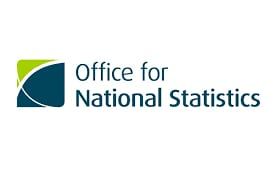
In this blog post, Holly Beattie, the Trust’s Media and Communications Officer, reflects on the stark inequalities in avoidable deaths in areas experiencing the highest levels of disadvantage and the role of the social determinants of health.
The number of avoidable deaths* across England and Wales in 2019 was substantially larger in the areas experiencing the highest levels of disadvantage, according to new ONS data. This most recent data acts as a stark reminder of the consequences disadvantage has on health outcomes and mortality.
Avoidable deaths counted for 39% of all male deaths and 27% of all female deaths in the areas experiencing this highest levels of disadvantage in England and Wales. This compares to 17 – 19% for males and 12% for females in the areas experiencing the lowest levels of disadvantage across the two nations.
An area’s deprivation is measured through multiple factors such as employment and income levels, education, living environment, crime rates, access to housing and services and overall health. The avoidable mortality rates clearly show the impact that living in an area with higher levels of disadvantage can have.
People’s Health Trust funds and supports community projects in the neighbourhoods experiencing the highest levels of disadvantage across Great Britain who work to tackle the social determinants of health. These are the socioeconomic circumstances that affect our life expectancy and the quality of our health.
In order to tackle the socioeconomic disparity in avoidable death rates and overall life expectancy it is essential to tackle the social and economic inequalities within the communities which are the most impacted.
There are many ways in which facing disadvantage within the social determinants of health can lead to higher avoidable death rates. Reflecting on just one social determinant of health: jobs and income, we can see how secure work, that pays at least the real living wage, for those on the lowest incomes could help to prevent early death.
People with the lowest incomes would need to spend almost three-quarters of their disposable income on food to follow Public Health England’s healthy eating advice. This is compared to just 6% of income for the wealthiest 10% of the population.
Rehana Begum, Centre Manager for Aspire and Succeed, Local Conversation in Lozells said:
“The Living Wage means for me that I get to enjoy a better quality of life not just for me but also for my family. I also feel that my employers really value me and the work that I’m doing.”
The Living Wage for many means being able to afford a better quality of life which then leads to a reduction in negative long-term health outcomes. As well as the Living Wage, good contractual conditions and a fair benefits system are also crucial.
If we are to face the stark inequalities exposed in this new data about avoidable deaths, then we must focus our efforts within the social determinants of health and ensure that people have a fair and equal chance to have good health in every town and city across Great Britain.
* Avoidable mortality describes a death that is either preventable or treatable and can be categorised into seven broad cause groups. Neoplasms, diseases of the circulatory system, diseases of the respiratory system, and alcohol-related and drug-related deaths accounted for 80% of all avoidable deaths in 2019.
,
